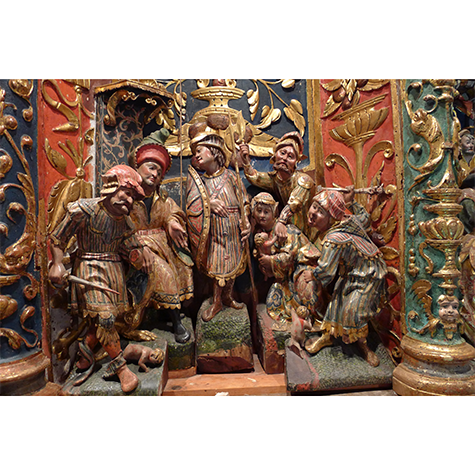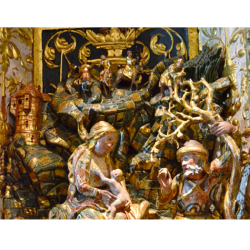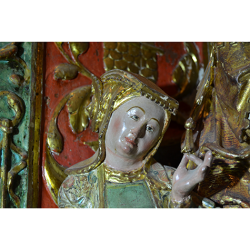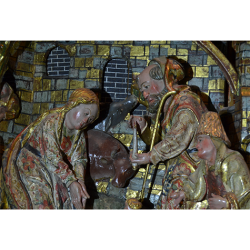Catalogue
ALTARPIECE OF THE VIRGIN OF BASCONES, VALDIVIA
OBSERVATIONS
Two quite different artistic traditions live together on this altarpiece: the characteristic of Flemish art makes their presence well noted in the way some of the groups of reliefs are distributed in independent groups on different levels, the importance given to landscapes and the general surroundings and the treatment given to some of the details in headdresses and garments, make us consider the reliefs as imported and reused from a previous altarpiece.
On the other hand, the centre section and predella hold larger, figures decorated with an Italian-inspired flavour (the stalls of the Evangelists, for example) that have no relationship whatsoever with the Flemish school. This same style of decoration appears again in relief work while faint traces of the work of Felipe Vigarny may be observed in the faces of some women. Professor Parrado del Olmo suggested that this similarity might be due to the reliefs having been made by a Flemish master craftsman who, just after his arrival in Spain, had established his workshop perhaps in Burgos, whose dioceses included the parish of Bascones in Valdivia. There he would have assimilated characteristically Spanish features, the most evident of which can be seen on the figures on the predella and centre section which were also the work of a local master craftsman in the same way as the relief work of the architecture had been.




